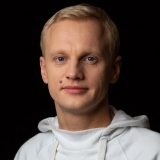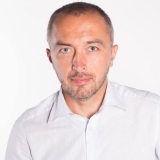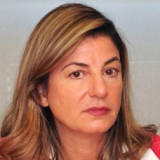War Speeches. Russian Front Crushing Down, Ukraine is Closer to NATO
Last week (June, 5–11), Russian occupiers committed yet another war crime – they blasted the dam of the Kahkhovka HPP and caused an environmental disaster. However, Russia denies their involvement to the explosion although a week before they allowed not to investigate accidents at dangerous facilities that occurred due to "war actions" and terror acts.
Russia's leadership noticed the Ukrainian counteroffensive which must have started last week. They rushed to declare that the counteroffensive failed. On the contrary, the information coming from the front proves otherwise.
Ukraine continues insisting on having the security guarantees for joining NATO enshrined in the written form at the NATO Summit in Vilnius in July. Meanwhile, Canada has become the 20th NATO state publicly supporting the idea of Ukraine's joining the Alliance.
Russia rushed to announce the failure of the Ukrainian counteroffensive
On Monday, June 5, the U.S. The New York Times wrote that Ukraine might have started the counteroffensive. They referred to U.S. and Russian officials and wrote that the Ukrainian troops intensified the artillery strikes and the ground attacks in the gust of the military offensive.
The NYT also said that Kyiv keeps silent about their strategy – Ukraine opted for no public announcements of the onset of the counteroffensive. Thus, on June 5, the Foreign Minister of Ukraine, Dmytro Kuleba, in his answers to the questions of journalists about whether the counteroffensive started, said that the start date is not that important, it is critical that it ends in Ukraine's victory.
"NATO membership cannot stop this war but NATO membership will stop further wars. That is why the best way to ensure security in the region is to arrive at the moment when Ukraine becomes a NATO member," added Kuleba.
The Minister also added that Ukraine has enough weapons to start the counteroffensive. Next day, on June 6, the Deputy Defense Minister of Ukraine, Hanna Maliar emphasized that there would be no public announcement about the counteroffensive of the Defense Forces. "Plans like silence. The offensive will not be launched on the social media," she wrote on her Telegram channel.
A propos, on May, 27, Commander-in-Chief of the Armed Forces of Ukraine, Valeriy Zaluzhnyi, released a video titled "It’s time to return our own." In the video, the Ukrainian military ask to "bless the decisive offensive, the sacred revenge, and the holy victory."
On June 7, Secretary of the National Security and Defense Council, Oleksiy Danilov, said that Ukraine had not yet launched the planned counteroffensive, but when it starts everyone would notice. According to him, Russian officials perceived local Ukrainian gains in some areas of the front as the beginning of a larger operation.
The fact is that since the beginning of the week, the Russian leadership have been actively talking about Ukraine's counteroffensive. At the same time, Moscow immediately stated that it allegedly failed. Thus, on June 5, State Duma Speaker Vyacheslav Volodin said that Ukraine’s offensive had begun, but Ukraine’s plan for a quick victory failed. On June 7, similar statements were shared in the Telegram channel by the former Russian president, deputy chairman of the Security Council of the aggressor country, Dmitry Medvedev.
On June 8, a number of Western media outlets, including The Washington Post and ABC News, based on unnamed sources, reported that the Ukrainian counterattack had begun. The next day, on June 9, Vladimir Putin spoke about the beginning of the counteroffensive. The same as the above-mentioned Russian politicians, he said that Ukraine’s offensive was not successful on the battlefield. However, Putin was cautious in his assessments and said that Ukraine still retained the offensive potential.
On June 10, President of Ukraine Volodymyr Zelensky said that Putin's words and Telegram channels should not be trusted. He encouraged to trust the Ukrainian military. According to him, the commanders of the Ukrainian army are positive about the counteroffensive.
"I am in touch with our commanders of various directions – Sirsky, Tarnavsky, Moskalev, Nayev, Zaluzhny. Everyone is positive now. So, pass it on to Putin…" said Volodymyr Zelensky.
The President also said that counter-offensive and defensive actions are taking place in Ukraine but it is not advisable to talk about their current stage.
However, during the week, especially on June 10–11, there came some information about certain local gains of the Ukrainian army and the liberation of several settlements in Donetsk and the region. In particular, it became known about the liberation of Blahodatne, Neskuchne, Makarivka, and Storozhove. In addition, the Institute for the Study of War (ISW) and individual OSINT communities report that the Armed Forces of Ukraine occupied a number of settlements in the Zaporizhzhia region (such as Levadne), but this information has not yet been officially confirmed at the time of preparation of the publication.
Destruction of the Kakhovka HPP: the Russian trace and the purpose of the explosion
The most resonant event of the past week was the blowing up of the Kakhovka HPP by the Russian invaders on June 6. As a result, about 80 settlements of Ukraine are at the risk of flooding. The long-term consequences of the blown-up dam are currently difficult to assess, but in less than a week, the war crime of the Russian military has already caused enormous social, economic, and environmental damage to Ukraine.
In the Ukrainian-controlled right-bank part of the Kherson region, 40 settlements were seriously affected, and in Mykolaiv region 31 settlements were partially flooded. In addition, the water flooded 14 settlements of the temporarily occupied territory of Kherson region. About 4 days after the explosion, the water level in settlements started dropping, but as of June 11, 32 settlements of the Kherson region remained flooded, where 3,821 residential buildings went under water. In total, more than 3,000 people were evacuated from the water trap.
As soon as on Thursday evening, the water level in the Kakhovka reservoir fell below the so-called "dead point" (12.5 m), which makes it impossible to withdraw water from a number of settlements. According to the UN, 700,000 people do not have proper access to drinking water, and the rise in the water level in the Dnipro river will lead to an increase in grain prices – on the morning of June 6, wheat prices increased by 3%. The Ministry of Agrarian Policy and Food of Ukraine, according to preliminary estimates, anticipates the flooding would cover approximately 10,000 hectares of agricultural land on the right bank.
Also, due to the blowing up of the hydroelectric power station, the occupiers created problems for the inhabitants of the Crimea because the main source of fresh water on the occupied peninsula is the North Crimean Canal which took water from the Kakhovka reservoir.
In addition, the destruction of the hydroelectric power plant caused at least 150 tons of machine oil spilling into the river, and the water washed away the weapons depots of the invaders on the left bank of the Kherson region. It brings an additional mine threat to civilians. In the water area of the sea in the Odesa region, the current of the Dnipro River carries mines, trip wires, and unexploded ordnance to the shores. According to border guards, the sea "turns into a dump and animal cemetery."
The amount of estimated environmental damage has already exceeded 55 billion hryvnias. 30% of the nature reserve fund of the Kherson region is now under threat of extinction. Because of the flood, almost 20,000 consumers were left without electricity. However, the proper functioning of the Zaporizhzhya NPP is of even greater concern, since the filling of the cooling ponds of the power plant depends on the water level in the Dnipro river. Currently, Energoatom has reported that, despite the low water level in the Kakhovka reservoir, it is still enough to meet the needs of the station.
The Russian army likely created such catastrophic consequences for military purposes. The head of the Joint Coordination Press Center of the South Defense Forces, Natalia Humenyuk, said that the occupiers wanted to stop the counteroffensive of the Ukrainian forces. The water spill and flooding of settlements, according to the occupiers, were supposed to create natural obstacles to a possible attack on the Kherson axis and allow to release part of the Russian troops for transfer to other parts of the front.
As soon as on June 11, the Ministry of Defense of Ukraine informed about the movement of Russian troops from the Kherson region, which confirmed the purpose of undermining the hydroelectric power station. In addition, the Ministry stressed that by destroying the dam, Russia is trying to divert part of the forces and resources of the Defense Forces of Ukraine to liquidate the man-made disaster. The Office of the President also drew attention to the obvious reasons and the interested executors of the disaster. Mykhailo Podolyak highlighted the objective signs of the internal mining of the dam by Russia: "engineering possibilities for mining the dam; paramilitary control of the territory; affective motives (to break negative trends on the battlefield); resolved challenges (moving military reserves to other parts of the front)."
The analytical and journalistic community also agree that Russia is directly involved in the mining of the Kakhovka HPP. Analysts at the Institute for the Study of War are certain that the Russians have a greater and more obvious interest in flooding the left bank of the Dnipro, despite the damage to their own prepared defensive positions.
At the same time, The New York Times, citing engineering and ammunition specialists, indicates that the destruction of the dam was caused by an explosion from the inside. The U.S. TV channel NBC News notes, citing their sources, that the U.S. presidential administration has intelligence data with evidence that Russia is responsible for the explosion of the dam of the Kakhovka hydroelectric power station.
At the same time, Ukrainian intelligence also draws disappointing conclusions for the occupiers. The Security Service of Ukraine intercepted the conversation of the invaders where they say that the dam was blown up by a Russian sabotage group, and the Chief Intelligence Agency revealed another informational special operation to discredit Ukraine regarding the mining of the hydroelectric power station. According to them, the Russians prepared a series of provocative materials that should shift the responsibility for the blow-up and create the preconditions for a political crisis.
It is also indicative that a week before the explosion of the Kakhovka hydroelectric power station, the Russian authorities allowed not to investigate the accidents at dangerous facilities that occurred as a result of "hostilities" and terror attacks. Despite all the facts, the Kremlin actively accused Ukraine of planting mines at the dam, although on the eve, immediately after the explosion, Kherson Gauleiter Vladimir Saldo assured that there were no problems with the flooding of the occupied communities.
Obviously, after realizing the extent of the crime, the Russian propaganda machine began to work in full swing. One of the main "proofs" of Ukraine's alleged involvement in the mining of the hydroelectric power station was an interview with Major General of the Armed Forces of Ukraine, Andriy Kovalchuk, who commanded the counteroffensive during the liberation of the right-bank part of Kherson region.
In an interview for The Washington Post, he said that Ukrainian forces made a test strike at one of the locks of the Kakhovka dam to have the water level rise. It became a key line in Russian messages at a UN meeting, in official comments by the Russian Foreign Ministry, and in statements by other Kremlin officials.
However, it must be mentioned that it is tampering with the words of the General taken out of context, because Kovalchuk considered the option of underflooding to block Russian crossings to the right bank. At the same time, the military assured that the flooding was considered an extreme measure, and Ukraine refrained from such actions. From the point of view of military expediency, the current flooding during the liberation of the right bank in the fall of 2022 might have facilitated the advancement of Ukrainian forces, but such steps are incommensurate with the damage caused, so the military leadership of Ukraine refused to move the events of that year into a technogenic disaster.
During the withdrawal of troops from the right bank, the Office of the President of Ukraine warned about the possible mining of the dam and the preparation of a man-made disaster, but at that time the Russian army did not dare to do so. Although this is exactly what the Russians did during their retreat with the Antonov Bridge and with a number of river crossings in Mykolaiv and Kherson regions.
Moreover, the Kremlin, did not even bother to invent anything but parroted Ukraine's accusation that the detonation was carried out to transfer troops from the Kherson axis because the offensive of Ukrainian forces allegedly "slipped," so it is necessary to "strengthen the offensive potential."
However, the Russian side once again showed that their words are worthless. The Kremlin demonstrated their false concern for the inhabitants of the "newly annexed" territories in crisis situations. While the Ukrainian side organized evacuation trains, held meetings of the National Security and Defense Council and the State Commission on Technogenic and Environmental Safety, created a headquarters for the liquidation of the accident, convened the UN Security Council and called on the international community for more decisive and prompt assistance, Russia continued to shell people escaping the flooding.
The head of European diplomacy Josep Borrell and the Permanent Mission of Ukraine to the UN urged Russia to stop shelling but Russian terrorists only opened shooting in the back of civilians. Kremlin spokesman Dmitry Peskov described the actions of the Russians to evacuate the people of the Kherson region as "selfless", and Russian Prime Minister Mikhail Mishustin established a government commission to liquidate the consequences of the disaster – only four days after the explosion of the hydroelectric power station.
The situation with the mining of the Kakhovka HPP showed not only the uncontrollability of the Putin regime, but also its complete insanity. The Kremlin is poised to embark on large-scale catastrophes for the sake of unlikely military advantages in the war, despite civilian casualties the regime claims as their citizens. Instead, the Armed Forces of Ukraine are aimed at further destroying the invaders and returning our territories.
"The insidious actions of the enemy, which create a social and economic crisis, will not stop the Ukrainian Defense Forces who are ready to liberate the occupied territories of Ukraine," the statement said.
Discussion of guarantees a month before the summit in Vilnius and regular statements about the "escalation" from Lavrov
Before the upcoming NATO Vilnius Summit, which is less than a month away, there was much talk about the potential of Ukrainian membership in the Alliance, security guarantees for our state and, in general, the perception of even more persistent assistance to Ukraine.Thus, Volodymyr Zelensky believes that security guarantees for Ukraine before its accession to NATO should be fixed in writing, and the Vilnius Summit of the Alliance is a "good platform" for their conclusion.
In general, it is already clear that the majority of NATO states support Ukraine's membership in NATO. On June 10, during an unannounced visit by Canadian Prime Minister Justin Trudeau, Ottawa officially became the twentieth state to support Ukraine's future membership in the Alliance, in either format. It stems from the wording "as soon as the conditions allow for it." Deputy Head of the OP Ihor Zhovkva says that "this formulation is the strongest among all the G7 countries."
Also on Monday, June 12, talks will be held in Paris between German Chancellor Olaf Scholz, Polish President Andrzej Duda and French President Emmanuel Macron. The publication Politico believes that the topic of Ukraine's NATO aspirations will be central at the meeting. Polish Prime Minister Mateusz Morawiecki recently said, "Ukraine deserves to be offered a very fast track to NATO."
Dmytro Kuleba also has hopes for the Vilnius Summit. He says that NATO membership is "the last big issue in Ukraine’s foreign policy, which, since last February has not moved further".
One of the most unexpected statements was made by NATO ex-general Anders Fogh Rasmussen, who believes that individual NATO members can agree to the introduction of their troops into Ukrainian territory. According to Rasmussen, this could happen if at the summit in Vilnius NATO fails to decide on steps for Ukraine’s membership or its security guarantees. Then "there is a clear possibility that some countries may take action individually." Dmytro Kuleba does not quite agree with this statement, stressing that Ukraine does not ask for the deployment of troops: "We say: give us weapons." Estonian Prime Minister Kaja Kallas, either, has not heard about the plans of member states to send their troops to Ukraine.
Although Anders Fogh Rasmussen really spoke only about the potential possibility in case of failure to make security decisions for Ukraine in Vilnius, Deputy Secretary of the Security Council of Russia, Dmitry Medvedev, threatened Europe with "hypersonic strikes" already because of the interview.
Last week, Russian Foreign Minister Sergei Lavrov threatened that Japan would face "serious consequences" for the supply of military equipment to Ukraine. After all, this allegedly leads to "a further increase in the number of casualties and an escalation of hostilities." It is noteworthy that the escalation, according to Lavrov, also leads to the supply of Ukraine F-16 fighters, one of the modifications of which is "capable of carrying" nuclear weapons.
But the National Security Council’s strategic communications coordinator, John Kirby, definitively told Sergei Lavrov: "If you are concerned about Ukraine's military potential, you should withdraw your troops and leave Ukraine."
Moreover, the media reported that, in addition to the F-16, at least some states are considering the transfer of F/A-18 Hornets – such as Australia. Also over the past week, several other significant events have taken place in the context of providing Ukraine with military support. In particular, the Upper House of the Swiss Parliament approved an amendment that will potentially allow the re-export of weapons to Ukraine. Now, after the Lower House of parliament voted against the amendment on June 1, it will be reconsidered.
Also on Friday, June 9, the United States announced the allocation for Ukraine of a new aid package with a total value of 2.1 billion dollars. On the same day, members of the US House of Representatives Foreign Affairs Committee announced the introduction of a resolution calling for the transfer of long-range ATACMS missiles to Ukraine. The draft states that "the United States and allies possess thousands of ATACMS missiles that could be transferred to Ukraine" because Russia’s current advantage in long-range weapons "makes Ukrainian forces to fight at a much more disadvantageous position."
One of the latest statements by Serbian President Aleksandar Vucic was also interesting in the context of providing weapons: he does not mind that his country sells ammunition to Ukraine through intermediaries. In addition, the Serbian leader stressed that his state "would not be a hub for re-exporting anything to Russia."
Thus, neither the threats nor the terrorist actions at the Kakhovka HPP, and the lies around it, managed to undermine the support to Ukraine. Furthermore, it added to its strength. British Prime Minister Rishi Sunak said: "Putin will think that he can wait us out, that the Alliance will get tired, exhausted and give up. It's not."
Who knows, maybe dozens of statements in support of Ukraine further increased the pessimism of the Russian elites. Thus, according to Bloomberg, the Russian elites found themselves in a dead end. Now their common opinion is that Putin will not be able to win the war that has begun. Even the best optimists consider a "frozen" conflict to be the best possible outcome for the Kremlin at this point. However, we can say that it is quite obvious that Ukrainians will not accept the frozen conflict.





